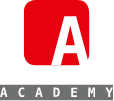Abstract
Background and Objectives
Recently, several minimally invasive gynecological, ENT and esthetic procedures have been introduced that are based on delivering “smooth” sequences of Er:YAG laser pulses to cutaneous or mucosal tissue at moderate cumulative fluences that are not only below the ablation threshold but typically also do not require local anesthesia. To explain the observed clinical results using “smooth‐resurfacing,” it has been suggested that in addition to the direct heat injury to deeper‐lying connective tissues, there is an additional mechanism based on indirect triggering of tissue regeneration through short‐exposure, intense heat shocking of epithelia. The goal of this study is to improve understanding of the complex dynamics of the exposure of tissues to a series of short Er:YAG laser pulses, during which the thermal exposure times transition from extremely short to long durations.
Study Design/Materials and Methods
A physical model of laser‐tissue interaction was used to calculate the temperature evolution at the irradiated surface and deeper within the tissue, in combination with a chemical model of tissue response based on the recently introduced variable heat shock (VHS) model, which assumes that the tissue damage represents a combined effect of two limiting Arrhenius′ processes, defining cell viability at extremely long and short exposure times. Superficial tissue temperature evolution was measured during smooth‐resurfacing of cutaneous and mucosal tissue, and compared with the model. Two modalities of non‐ablative resurfacing were explored: a standard “sub‐resurfacing” modality with cumulative fluences near the ablation threshold, and the “smooth‐resurfacing” modality with fluences below the patient′s pain threshold. An exemplary skin tightening clinical situation was explored by measuring pain tolerance threshold fluences for treatments on abdominal skin with and without topical anesthesia. The obtained temperature data and pain thresholds were then used to study the influence of Er:YAG laser sequence parameters on the superficial (triggering) and deep (coagulative) tissue response.
Results
The simulations show that for the sub‐resurfacing modality, the parameter range where no excessive damage to the tissue will occur is very narrow. On the other hand, using pain tolerance as an indicator, the smooth‐resurfacing treatments can be performed more safely and without sacrificing the treatment efficacy. Two preferred smooth‐resurfacing treatment modalities were identified. One involves using optimally long pulse sequence durations (≈1–3 seconds) with an optimal number of pulses (N ≈ 10–30), resulting in a maximal short‐exposure superficial tissue response and moderate coagulation depths. And for deeper coagulation, without significant superficial heat shocking, very long pulse sequences (>5 seconds) with a large number of delivered pulses are to be used in combination with topical anesthesia.
Conclusions
A comparison of the simulations with the established smooth‐resurfacing clinical protocols in gynecology, ENT, and esthetics suggests that, through clinical experience, the clinical protocols have been optimized for the maximal superficial heat shock triggering effect. Further research is needed to gain a better understanding of the proposed role of heat shock triggering in the clinically observed regeneration of cutaneous, vaginal, and oral tissues following Er:YAG laser smooth‐resurfacing. Lasers Surg. Med. © 2021 The Authors. Lasers in Surgery and Medicine published by Wiley Periodicals LLC.


